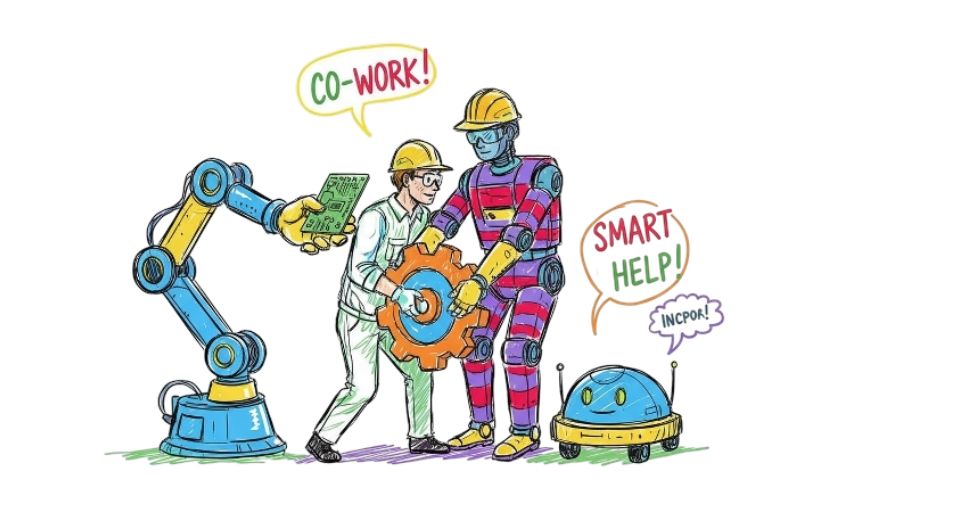
Oct 24, 2025

In factories and shipping hubs as well, automation has progressed from clumsy, autonomous equipment to smart, more responsive systems hand-in-hand with human workers. The global collaborative robots market, as pioneered by Metastat Insight, is at the juncture of human ingenuity and machine precision bringing a practical revolution in the way factories, warehouses, and service-environments operate.
When current operations meet new strains
Industry is faced today with a succession of intensifying pressures: labour shortages within mature markets, advanced product variations, shorter production cycles, and increased safety and sustainability expectations. The worldwide Collaborative Robots market responds to many of these concurrency issues by delivering machines that can easily be integrated into heterogeneous human-robot environments, allowing businesses to evolve from monolithic automation towards flexible collaboration.
As manufacturing plants implement intelligent-manufacturing techniques, the need for genuinely cooperative robotics that can adapt to changing workflows without enormous safety walls or complete infrastructure overhaul has moved from preferable to imperative.
What the technology provides and why it is important
Essentially, a collaborative robot is designed to interact safely and naturally with human beings. In contrast with traditional industrial robots, which generally require protected cells and specialized programming, these machines make use of force-limiting joints, proximity sensors and user-friendly interfaces so that individuals and robots may occupy the same area, walk over components, or assemble parts cooperatively.
The benefit is in flexibility and accessibility: repetitive jobs, those that are ergonomically stressful or require high precision are the domain of these machines, so that human operators can be focused on inspection, customisation or decision-making. They are versatile enough to be utilized in assembly, pick-and-place, welding, machine-tending and so on enabling manufacturers to scale up or reorganize production lines quickly.
Advantages of performance are reduced cycle times, higher consistency, less error and improved worker safety. With the capability to communicate with digital systems (for monitoring, analysis or cloud connectivity) these robots become facilitators of greater factory-floor intelligence.
Evolution through adoption and innovation
The global collaborative robots market began as a niche in industrial automation smaller arms, lighter payloads, less tasks. First deployments were cautious, often pilot-scale. But incremental tech improvements better sensors, more intuitive software, better safety systems and growing demand for flexible automation have driven a quicker take-up.
Some of the recent breakthroughs include mobile collaborative platforms (robots moving around on the factory floor versus stationary), more integration with AI/vision systems (so robots can "look" and react to what's around them) and modular automation packages for small and medium-sized enterprises. All of these developments have brought the narrative from experimental to mainstream, so deployment is now practical for a wide variety of production environments.
Where adoption is deepest and fresh opportunities
Adoption of human-robot Collaborative Robots is deepest in advanced manufacturing ecosystems around the world Europe, North America and Asia-Pacific. Europe, with its dominant automotive and electronics industries, has embraced shared human-robot work-cells; North America sees adoption in logistics automation and warehousing. Asia-Pacific is gaining momentum, in the meantime, owing to mass-scale manufacturing, rising labour costs and government-driven smart-factory programs.
They also pose tremendous growth opportunities: portions of South Asia (India) and Southeast Asia are shifting towards more automation-friendly production, which is an opportunity for Collaborative Robots to avoid mainstream automation paths. With cheaper, more flexible systems, businesses in these regions can gain significant advantages.
Challenges to be overcome and opportunities ahead
Some of the challenges remain. Front-end investment and change-management of the work culture can hold up adoption. Safety standards and regulatory frameworks are still being developed, particularly in human-robot shared workspaces; integration of new equipment with old systems can be complex.
But the potential is huge: manufacturers requiring supply-chain resilience, faster change-over among product model versions and green production practices all find in this market a serious solution. Innovations such as AI-driven adaptation, cloud-based predictive maintenance and modular deployment models reduce the barrier for small businesses and new geographies to join.
Why it matters today
In an era marked by digital revolution, transition of labour and sustainability issues, the world market for Collaborative Robots as Metastat Insight sees it turns into a strategic issue. Collaborative Robots are not just a category of automation machinery: they represent a revolution in human-machine interfaces, in production keeping pace with change, and in making operations smarter and safer.
As production, logistics, and service areas move towards human-robot collaborations, the Collaborative Robots market is shaping the way companies compete, create and respond to global challenges.
Drop us an email at:
Call us on:
+1 5186502376
+91 73850 57479